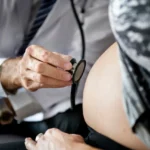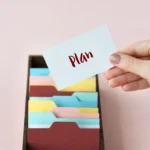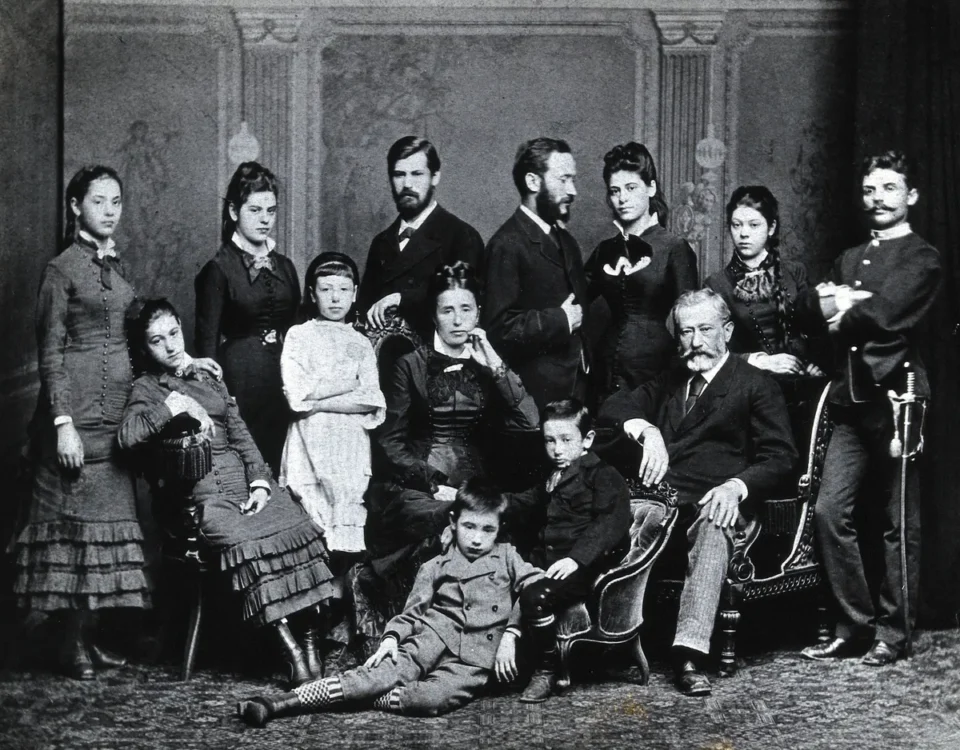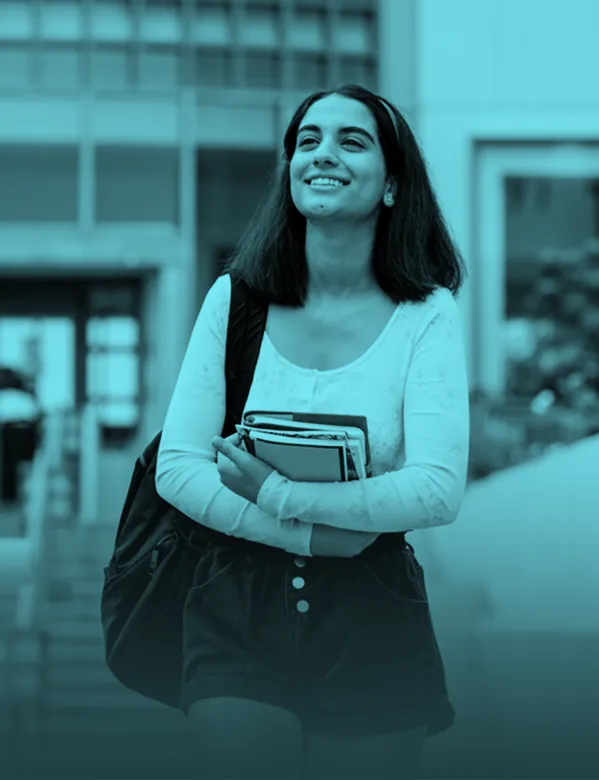
OB/GYN Insights: Navigating Career Challenges and Connecting with Teen Patients
April 11, 2025
From Classroom to Clinic: Essential Strategies for Medical Students
April 11, 2025Summary (TL;DR)
For International Medical Graduates (IMGs), navigating ERAS requires meticulous organization—determine your ECFMG pathway, gather documents, secure letters of recommendation, and prepare a polished CV and personal statement. Use tools like Google Sheets to track applications and deadlines.
When preparing for international volunteering, reflect on your goals and desired activities, research countries that align with your interests, and explore opportunities through your school or trusted organizations. Brush up on relevant skills, pack necessary medical supplies, and maintain a positive attitude to maximize your experience abroad. Reflect afterward to solidify lessons learned and gain new perspectives on global health.
Embarking on international medical opportunities can be one of the most enriching experiences for any medical student. Whether it's through clinical placements, volunteering, or navigating application processes like ERAS, these experiences offer invaluable insights and skills that transcend traditional classroom learning. The journey to securing such opportunities might initially seem daunting, but with careful planning and strategic actions, you can pave a path toward success. This comprehensive guide combines insights from three distinct articles to provide a detailed roadmap for students eager to explore international medical opportunities.
Securing an International Clinical Placement
One of the most exciting stages of a medical student’s journey is their first clinical placement. Learning about the theory underpinning the human body and its systems is fascinating, but it’s much more illuminating to see this theory being applied to help real people. Although any clinical exposure is invaluable, getting involved in an international clinical placement may be one of the most enriching experiences one can undertake! The advantages of securing a clinical placement overseas are numerous: you work alongside globally renowned medical professionals, learn how to communicate with people from diverse backgrounds, pick up unique local skills and techniques, and perhaps most alluringly, visit bucket-list destinations while enhancing your CV.
Navigating the world of international placements can appear initially daunting, but it’s nothing a few helpful tips can’t clear up. Your direct seniors in medical school should be your first port of call if you’re interested in acquiring a clinical placement abroad. Not only are they easily accessible, but they also know what it is like to be in your shoes and, coming from the same medical school, will likely have similar experiences and expectations. Your senior peers may be able to put you in direct contact with the hospital/agency that organized their placement for them, and may even be willing to write you a letter of recommendation! If the thought of reaching out to more experienced students makes you nervous, just remember that they are most likely very eager to help a fellow student out and share their advice.
Additionally, reach out to your professors. Although your professors won't have recently applied to overseas clinical placements, unlike your senior peers, they will probably have a more thorough understanding of your capabilities, skill level, and disciplines of interest. For instance, if you are particularly interested in undertaking a pediatrics clinical placement overseas, you would want to speak to one of your professors specializing in pediatrics in case they might be willing to put you in contact with a colleague working abroad. Since most medical school professors are extensively involved in global research and clinical teaching, they will most definitely be in contact with overseas clinicians and, at the very least, will be able to recommend that you apply to a particular program or hospital that several students at your medical school have had previous success with.
Securing your dream international clinical placement requires significant forethought and pre-planning. If you are confident you want to undertake a clinical placement abroad, look into the programs and countries you are interested in well in advance of when you want to apply so you can ensure that you satisfy any program prerequisites. For example, certain programs/placements may mandate that you have completed specific university courses or medical training. Many students don’t realize that competitive programs have prerequisites and/or other specific requirements and, unfortunately, end up just barely missing out on an experience of a lifetime. So if there’s one thing you take away from reading this, remember to always check for program prerequisites!
Unfortunately, since international clinical placements are so popular, they also tend to be highly competitive. This means that you should ensure your CV is as polished as possible before you apply to the program of your choice. To ensure the best chance of success, you should take up all opportunities you receive early in medical school to rack up work experience relevant to the clinical placement you are aiming to apply to. For instance, get involved in plenty of research if you are applying to a research-heavy hospital or shadow your local GP if you want to participate in a GP placement.
While it’s easy to get hung up on that one dream overseas placement, know that there is more than one option. You should always remain open-minded and carefully consider all the overseas clinical placement options available to you before committing fully to pursuing just one. This means you should look at multiple countries—even ones you may not have previously considered—as well as several different hospitals and specialties. Although it may be disappointing to not receive an offer to undertake your dream clinical placement, find solace in the fact that all placements overseas are essentially built equal: any overseas clinical placement is sure to be enriching and will come with the same benefits of cultural immersion and personal development.
If you have tried contacting your senior peers and professors to no avail, the next step may be to partner up with a specialized medical elective agency. Although these agencies may charge a hefty fee for their services, they tend to have considerable success in matching up their clients to one of their partnered overseas hospitals or programs. Moreover, even though you may have to pay a fee to enlist the services of a medical elective agency, they typically give you a guarantee of an overseas clinical placement or your money back. The best way to find a trusted agency is to ask your peers and professors if they are able to put you in direct contact with one. Alternatively, there are several such agencies that are relatively easy to find through a quick Google search.
Navigating ERAS for the IMG
The process of navigating ERAS (Electronic Residency Application Service) for International Medical Graduates (IMGs) can be overwhelming, but meticulous preparation can make it manageable. Having had to navigate all these mini challenges and big milestones independently, I wanted to leave you all some tips that helped me keep organized and get started right away!
This process involves a lot of moving parts. Time management and organization are key to making this entire process as smooth and stress-free as possible. Self-explanatory, but double-check which pathway you qualify for via the ECFMG website, because they seem to change slightly each year!
Each pathway has a different set of approval requirements, meaning you need to make sure you're applying to the right one and fulfilling the right set of requirements to qualify for pathway approval. Getting pathway approved as quickly as possible before ERAS officially opens is crucial. The sooner you get pathway approved, the sooner you're ECFMG certified, which is a requirement for many programs!

Don’t forget to register for Match! Don’t make the rookie mistake of assuming your Pathways Application, ERAS registration, and NRMP (Match) registration are the same—make sure you register and pay for each one so that you’re good to go when Match Day comes around! While ensuring your ECFMG requirements are squared away, make things easier for future-you by starting on ERAS! Purchase the token through your ECFMG OASIS portal and then head over to ERAS and register!
Look at the requirements and make a timeline for yourself! The tricky thing about ERAS is that it's a lot of moving parts! Everything for us IMGs gets uploaded either through ECFMG or through ERAS, and that means we have to keep an eye on things! Prioritize tasks that take the longest and are dependent on other people—like your letters of recommendation and school documentation (MSPE). Make sure your requests to your authors are sent out early, as each LOR takes about a week or more to get through the entire approval and release process before it is released to ERAS. Talk to your administrative offices and make sure that you are able to get scans of your documents right away so that you can adjust their document size (using an online PDF compressor like PDF2Go ensures correct file sizes).
Fill out your biographic data and other curriculum vitae entries. I did this on and off throughout the month after taking Step. I didn’t want to jinx myself, but I also didn’t want to shoot myself in the foot by leaving too much for the last minute! Any time I had a free moment, I’d fill up a few items on ERAS and leave the rest for another time. In terms of the CV, I added all my experiences and left the descriptions for the end, summarizing each experience in paragraph form in about 2-4 sentences depending on how impactful or how much I wanted to share about that particular experience. It went quickly!
Take a look through the programs for your chosen specialty and save the ones you plan on applying to! This is key because once you have all the programs saved and your paperwork has been uploaded, all you have to do is hit the “Select All” checkbox and then “Apply” when you’re ready! Add almost all the programs for your chosen specialty to your “Saved Programs” and then delete them as you change your mind or do more research. Use a residency application tracker in Google Sheets to keep track of the documents they require and how many letters of recommendation they want so you can assign the appropriate documents!
Check, check, and double check! Don’t be afraid to ask for help! Ask close friends who are grammar enthusiasts to read through your CV descriptions to check for any gross errors and typos. Check them three times on your own before submitting—once right after you wrote them, once after your friends made changes, and once more before pasting them into the ERAS and submitting. It may seem like overkill, but attention to detail is something all physicians should have—and ERAS is no different! If you’re an IMG, it may be helpful to hire someone to help edit your personal statement or go through your ERAS CV with you.
Once all is said and done, and you’ve triple-checked everything, the only thing left to do is certify and submit. Before hitting the button and signing with your password, make sure you’re happy with your application. You can only do this once and cannot make any changes after you hit submit! Then, CELEBRATE because YOU DEFIED THE ODDS—submitted your application, and have done everything you can to make this application your absolute best! Stay hopeful, because we’re all sitting next to you waiting, too! This is our year, doctors!
International Medical Volunteering: A Step-by-Step Guide
So, you’re interested in medical volunteering overseas. Who wouldn’t be? There are so many reasons to volunteer internationally, such as having a better-looking CV, gaining a sense of accomplishment, and developing your communication and teamwork. Plus, it’s basically a holiday since as soon as you’re done with the day’s work, you’re free to explore the nightlife of a foreign city all on your own!
I recently just completed a three-week outreach trip to Vietnam, and it was one of the most thrilling yet educational experiences I have ever had. Working in a difficult clinical environment, with scarce resources and a pretty significant language barrier—believe it or not, the two weeks I spent on Duolingo learning Vietnamese were not enough for me to start taking entire medical histories—thank goodness for translators—it was easily the most adversity I have ever faced as a medical student, but I rose to the challenge, developing some life-long problem-solving and communication skills along the way.
The biggest reason why only a tiny proportion of medical students have ever done international volunteering might simply be that they don’t know where to start. To help eliminate that barrier, here’s a step-by-step guide on how to get started with volunteering overseas and how to get the most out of it!

Think about why you want to volunteer overseas
This might be the most important step. While volunteering overseas is rewarding, it’s also key that you be realistic about your expectations. During the clinical component of my trip in Vietnam, I was basically only able to take histories with the help of an interpreter and conduct simple physical examinations, reporting my findings to the doctor looking after me that day. The best reason to go is if you’re keen to gain a unique perspective of the difficulties and other health inequities that developing countries face; exposure to other healthcare systems and cultures will certainly give you a greater appreciation of global health.
Identify the activities you’d like to be involved in
My trip consisted of: a clinical component, where I essentially just spent a week on rotation in a small Vietnamese hospital; a health education component, where I assisted in teaching young rural children the process and importance of maintaining proper hand and oral hygiene; and a general volunteering component, where I spent a week in a local school, bouncing between teaching English to some of the older students and helping with the construction of a new building for the school. Construct a list of the activities that you’re interested in partaking in and make sure these align with your goals.
Create a list of countries you’re keen on
This was easily the most enjoyable part of the preparation process, Googling all the different countries I could potentially visit and ogling at how beautiful the views were or how delicious the food looked. Identify whether you’ll actually enjoy the surroundings that you’ll be staying in for a few weeks. Also, consider whether the country you’ll be visiting will actually be able to provide you with the activities or experiences you’re hoping to get out of the trip.
Ask around your school
Most people forget that their medical schools are actually looking out for their students and have systems in place to provide their students with opportunities like these! Get in touch with the dean or whoever else is directly involved with the medical students at your school, and let them know that you’re searching for an opportunity to volunteer overseas. If they don’t have anything available immediately, they’ll be able to reach out and let you know when something does pop up! Alternatively, ask some of your professors directly, as most lecturers and professors have direct connections to foreign hospitals from their own involvement with international health.
Do some research online
If you had no luck with step number four, or if you simply can’t be bothered searching within your school, there are numerous organizations that will do all the hard work of activity planning and searching for accommodation for you. Have a look online for organizations dedicated specifically to providing medical students with hands-on experience volunteering overseas. Be careful of organizations that aren’t clear with their policies or refuse to answer questions you may have. Ensure that the program can use your expertise as much as possible—if you’ve ever studied engineering or if you worked as a nurse before embarking on the journey that is medical school, make sure you can be involved in a role that allows you to tinker with medical equipment or allows you to be directly involved in patient care.
Prepare for the activities you’ll undertake
This step is crucial for making sure you’ll be able to enjoy this trip to the fullest. If you know you’ll be involved with patient assessment, make sure to brush up on some basic history-taking and physical examination techniques. If you’re going to be teaching young children important hand hygiene or oral hygiene skills, make sure you know how to explain these in a simple yet engaging way. Perhaps even more importantly, make sure you also know how to properly wash your hands and floss! To ensure that you get the most out of the activities you’ll be doing, make sure you actually know how to do them.
Ready for take-off!
Once you’ve made all your preparations for the volunteering component of the trip, it’s time to make sure you’re actually ready to fly! Renew your passport if need be, get all of the necessary shots (either visit a travel clinic or review the CDC guidelines on the recommended vaccines or prophylactic medications for the region you’ll be traveling to), and make sure to stay healthy before you depart! Also bring some additional personal medical supplies, especially things like Gastro-Lyte and some loperamide.
Getting the most out of your time there
Getting the most out of your time there relies partly on some of the previous steps, but more importantly, it relies on you having a positive attitude the entire time. There will be a massive culture shock at first if you’ve never visited the country before, which may seem daunting and put you off from engaging as much as you could with the learning or medical volunteering opportunities you’ve been presented with. But remember, you’re there because you had a goal, so keep that goal in mind, and throw yourself into your activities as much as possible.
Also, make sure to enjoy the non-medical parts of the country in your downtime! Most activities won’t last the entire day, and you’ll have the freedom to partake in the night-time revelries of a foreign city or discover new pastimes and cuisine that aren’t available in your home country. Take advantage of this and turn your medical volunteering trip into a semi-holiday while you’re there! Establish a good relationship with some of the locals because they’ll be able to give you the most authentic experience of their local activities.
Reflect, reflect, reflect!
Once you’re done having the time of your life overseas and you’ve come home to your usual hectic routines as a medical student, take some time to reflect on your experiences. Think about questions like what was different about the culture there? When I was in Vietnam, I was stunned by the overwhelming camaraderie and emphasis on the family they displayed. Reflecting on the luxuries we have in relatively affluent societies and appreciating these is essential.
So there you have it! A comprehensive guide combining insights from securing international clinical placements, navigating ERAS for IMGs, and engaging in international medical volunteering. These experiences offer unparalleled growth and learning opportunities, shaping you into a well-rounded medical professional ready to face global challenges confidently.

Topic FAQs
Take Your Medical Education to the Next Level with Physeo
Whether you're preparing for Step 1, Step 2, or striving to become a more confident and compassionate physician, Physeo is here to support your journey. Our resources are designed to help you master complex concepts, stay motivated, and achieve your goals.
📚 Unlock Premium Study Tools
Dive into our comprehensive video lessons, image mnemonics, and proven study plans tailored for success. Check out Our Plans to explore subscription options and find the perfect plan for your needs.
💡 Stay Inspired with Our Blog
Looking for tips on excelling in medical school, overcoming burnout, or balancing life as a student or professional? Check out our Blog. It’s your go-to resource for actionable advice and stories from fellow medical students and professionals.
📺 Boost Your Learning with Our YouTube Channel
Prefer learning through videos? Subscribe to our YouTube channel for free tutorials, step-by-step explanations, and expert insights to help you ace your exams and thrive in your medical career.
📱 Connect with Us on Social Media
Stay updated, inspired, and connected with Physeo across our social media platforms:
- Instagram: Follow us on Instagram for daily motivation, study tips, and behind-the-scenes content.
- Facebook: Join our community Here for updates, discussions, and support.
- LinkedIn: Connect with us professionally at LinkedIn for industry insights, career advice, and networking opportunities.
🚀 Ready to Excel?
Invest in yourself and your future patients by joining the Physeo community today. Let’s work together to create a generation of healthcare providers who lead with knowledge and compassion.
Start Your Journey NowAuthor
Richard Zhang and Paula Danika A. Binsol
Content Creators
Latest articles
Our newsletter
- Work-Life Balance
- USMLE Prep
- Study Tools
- Stress Management
- Spaced Repetition
- Residency Applications
- Physeo
- Personal Growth
- Pathology Education
- OB/GYN Specialty
- Nutrition
- Neuroscience
- Mental Health
- Medical School Tips
- Healthcare Innovation
- Global Health
- Fitness & Wellness
- Faith & Medicine
- Doctor-Patient Relationships
- Creativity in Science
- Career Planning
- Anatomy Mastery












